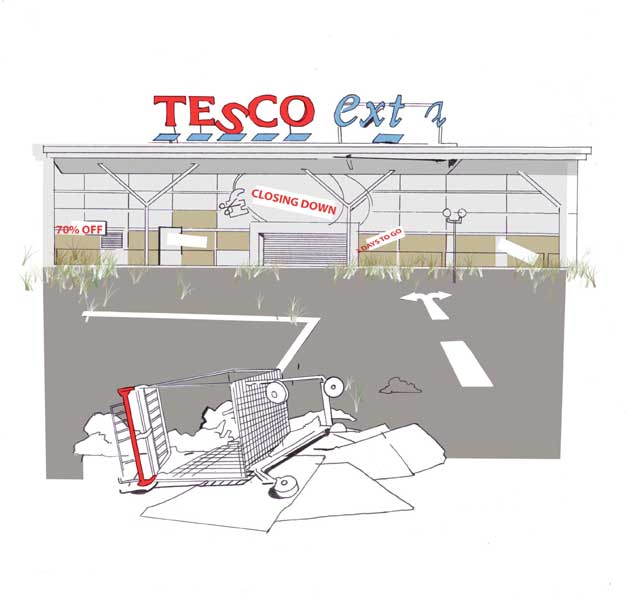2020 vision: Second-hand Prius, anyone? Car use declines across Europe as society returns to medieval values

Looking back, the energy riots of 2016 were avoidable. The technological setbacks of completing the new smart grid, into which householders were supposed to sell surplus energy, and the lower-than-forecast supply from renewable sources, meant energy prices continued to climb year by year. When the broadband blackouts began, driven by overloaded networks as we stayed in to download HD films to our unsleeping computers, well, that was the spark.
But the tinder was already dry. With a greater portion of household budgets going on utilities and new taxes, the 2009 recession slumped into a depression. Everywhere except London. The capital, newly minted centre of the carbon-trading universe, hummed to the sound of carbon credits being bought and sold on the exchanges. Millionaire traders became billionaires and billionaire industrialists were untouchable in their silent, hydrogen-powered limousines. The same old faces – retrenched bankers, former ministers and stock-market speculators – cashed in. The economic revival, fuelled by the green tech bubble in the US and the green manufacturing boom in China, never touched the rest of the UK.
The cap-and-trade policies in the US, the EU and Australia, brought about by the UN climate-change conference of 2009, were the first mistake. The EU had already committed to a 20 per cent cut in CO2 emissions from 1990 levels by next year, but thanks to its Emission Trading Scheme (ETS), running since 2005, these could be delivered while actual CO2 emissions rose. Alchemy indeed. And the EU's target of 20 per cent more energy from renewable sources has proved as hard to pin down as the wind itself.
Despite the smart meters we have in each home ekeing out water and energy, power consumption has swelled even as oil prices are peaking under demand from a booming Asia. No new nuclear power stations have been completed and there are mixed results from Southampton University's research into algal biofuels. It's not all bad news: the success of the Orkney's tidal-power generation has reinvigorated the Scottish independence movement.
Other green technologies aren't so successful: the solar iPhone has been notable for delivering even shorter battery life than the standard model, although at least it provides an excuse for waving the device around all the time.
In hindsight, the decade had started optimistically enough. Under the Tories, the New Localism movement brought some character back to towns and villages. Rooted in the 1960s idea that the most sustainable model of civilisation was a medieval town in which most products and services derived from within its walls, the start of the decade saw a dawning realisation that new jobs and responsible custodianship of the environment weren't mutually exclusive. We travelled less and bought locally. It wasn't about food miles, rather the idea that our local economies were more vibrant if supported from within.
It was a transition taking place across Europe and led by financial necessity. Declining birth rates and ageing populations in Italy, Spain and Germany have seen the ratio of taxpayer to state-supported citizen shrink from four to one to three to one, while cities such as Lagos grew by 60 people an hour. Patterns of consumption changed almost month by month. Soon, Europeans were cycling more and subsisting locally. Neighbours got to know neighbours. As roof gardens were cultivated and street markets thrived, so out-of-town supermarkets closed.
As architect Stefan Behling (Foster and Partner's sustainability specialist) noted, in the same way the need for petrol depends on the design of your car, so the need for a car depends on the design of your city. By changing the city you change your needs, and from Milan to Munich car ownership has declined. And as anyone who has tried in vain to sell their third-generation Prius knows, electic hybrids never took off.
China, however, was already producing 12 million new cars a year by 2009; with hundreds of millions of people joining the middle classes in China and India, that figure was dwarfed in following years. Today, there are more than 150-million cars on China's new roads, the upmarket models equipped with toilets for when drivers feel the call of nature while stuck in the interminable urban traffic jams.
From 2010 to the eve of 2020 the world has had another billion mouths to feed. Farming inhospitable regions brought greater habitat loss than ever before. Asian and South American rainforests were ripped up for poor ranchland while deserts, old and new, were irrigated for crops. But, despite Britain's woes, the day-long blackouts and night-long riots, who could have predicted in 2010 that the first world war of the 21st century would be fought not over energy but water?
Join our commenting forum
Join thought-provoking conversations, follow other Independent readers and see their replies
Comments